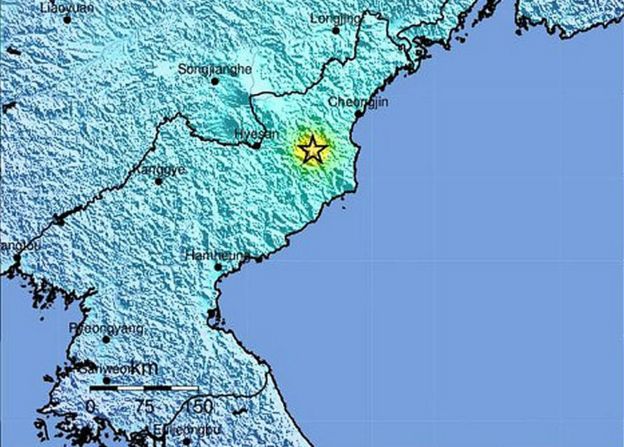North Korea nuclear test: Trump condemns ’hostile’ move
What does the test tell us?
North Korea claimed its sixth nuclear test was a "perfect success", after seismologists had detected an earth tremor.
South Korean officials said the latest test took place in Kilju County, where the North's Punggye-ri nuclear test site is situated. The "artificial quake" was 9.8 times more powerful than the tremor from the North's fifth test, the state weather agency said.
It came hours after Pyongyang said it had miniaturised a hydrogen bomb - which is much more powerful than an atomic bomb - for use on a long-range missile. North Korean leader Kim Jong-un was pictured with what state media said was a new type of hydrogen bomb. State media said the device could be loaded on to a ballistic missile.
Analysts say the claims should be treated with caution, but the North's nuclear capability is clearly advancing.

(Image caption :The USGS put the site of the quake near the Punggye-ri test site)
However, this does appears to be the biggest and most successful nuclear test by North Korea to date - and the messaging is clear. North Korea wants to demonstrate it knows what makes a credible nuclear warhead.
Nuclear weapons expert Catherine Dill told the BBC it was not yet clear exactly what nuclear weapon design was tested.
"But based on the seismic signature, the yield of this test definitely is an order of magnitude higher than the yields of the previous tests."
Current information did not definitively indicate that a thermonuclear weapon had been tested "but it appears to be a likely possibility at this point", she said.
Hydrogen bombs are many times more powerful than an atomic bomb. They use fusion - the merging of atoms - to unleash huge amounts of energy, whereas atomic bombs use nuclear fission, or the splitting of atoms.
...[ Continue to next page ]
tag: blog , information
Share This Post





